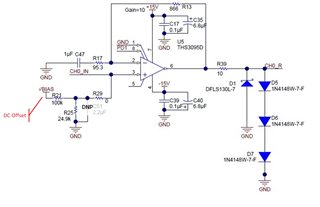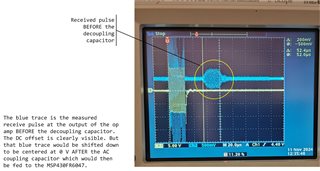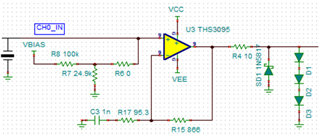Other Parts Discussed in Thread: TS5A3357, EVM430-FR6047, MSP430FR6047
Tool/software:
This is a section of the TIDA-01486 schematic that shows one of the 4 receive paths. There is a DC offset created at the input to the op amp. My question is this: Is this DC offset really necessary?

For the purpose of the TIDA-01486 design, I suppose the DC offset is necessary because, not shown in the schematic section pictured above, immediatly following the op amp output is the TS5A3357 switch which can only handle positive waveforms. And the switch is necessary so that the TIDA-01486 can support the switching for the 2 pairs of transducers.
But the output of the switch is AC coupled to the input of the EVM430FR6047 through a 1 nF capacitor (when using the TIDA-01486 with the EVM430-FR6047 evaluation board). If I wanted to create a design that incorporates this amplifier design for only 1 pair of transducers, then the DC offset ought not be becessary since it gets stripped away by that AC coupling capacitor.
Can you please confirm my thinking here?







